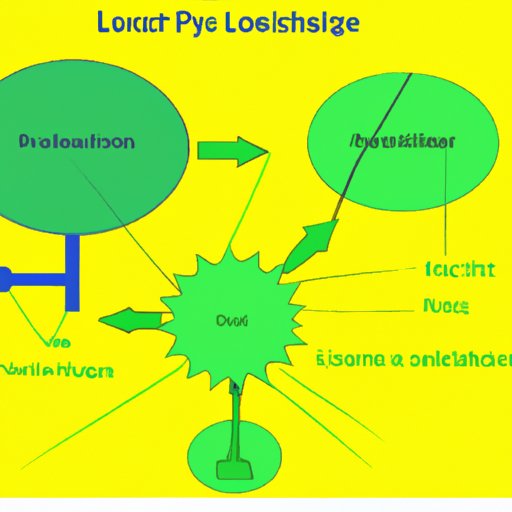Introduction
Photosynthesis is a process that occurs in plants, algae, and certain bacteria, where light energy is converted into chemical energy and stored as sugar molecules. In photosynthesis, light energy is absorbed by chloroplasts, which are special organelles found in plant cells. The light energy is then used to create ATP (adenosine triphosphate) and NADPH (reduced nicotinamide adenine dinucleotide phosphate), which are used to convert carbon dioxide and water into carbohydrates and oxygen. This process is essential for the survival of most living organisms on Earth, as it provides them with the energy they need to survive.
Examining the Photosynthetic Process: What Role Does Light Energy Play?
The relationship between light energy and photosynthesis is complex, but it is clear that light energy plays an important role in the process. Light energy is used to initiate the process of photosynthesis, as it is needed to activate the chloroplasts and trigger the production of ATP and NADPH. Without light energy, photosynthesis would not be able to take place.
Light energy is also used to drive the process of photosynthesis, as it is necessary for the creation of the ATP and NADPH molecules that are used to convert carbon dioxide and water into carbohydrates and oxygen. Without light energy, these molecules would not be created, and the process of photosynthesis would not be able to occur.

A Closer Look at the Role of Light Energy in Photosynthesis
In order to understand the role of light energy in photosynthesis, it is important to examine the mechanism by which light energy powers the process. Light energy is absorbed by chloroplasts, which contain pigments such as chlorophyll. These pigments absorb the light energy and use it to create ATP and NADPH molecules. These molecules are then used to convert carbon dioxide and water into carbohydrates and oxygen.
It is also important to investigate the relationship between light energy and photosynthesis. Light energy is necessary for the activation of the chloroplasts, and it is also necessary for the production of the ATP and NADPH molecules that are used in the process of photosynthesis. Without light energy, photosynthesis would not be able to take place.
Using Light Energy to Power the Photosynthetic Process
Light energy is an important source of energy for photosynthesis, as it is necessary for the activation of the chloroplasts and the production of the ATP and NADPH molecules. By using light energy, plants and other organisms are able to convert carbon dioxide and water into carbohydrates and oxygen, which they can then use as a source of energy.
There are several advantages to using light energy as a source of energy for photosynthesis. First, light energy is abundant, so there is no need to worry about running out of it. Second, it is renewable and sustainable, so it does not have to be replaced or replenished. Finally, it is clean and free from pollutants, so it does not have any negative environmental impacts.
Conclusion
Light energy plays an important role in photosynthesis, as it is necessary for the activation of the chloroplasts and the production of the ATP and NADPH molecules that are used to convert carbon dioxide and water into carbohydrates and oxygen. By understanding the relationship between light energy and photosynthesis, organisms are able to use light energy as a source of energy for the photosynthetic process.
Understanding the role of light energy in photosynthesis has several benefits. It allows organisms to use light energy as a source of energy for the photosynthetic process, and it also helps us to better understand the complex relationship between light energy and photosynthesis. Ultimately, this knowledge can help us to create more efficient and sustainable methods of producing energy.


